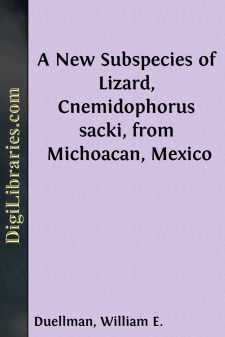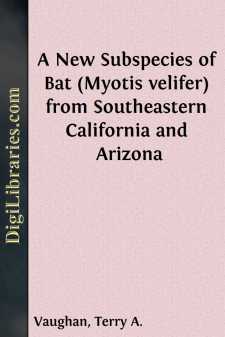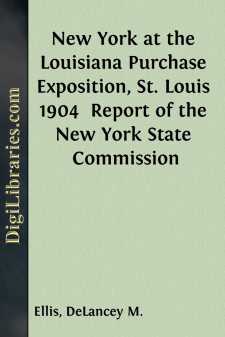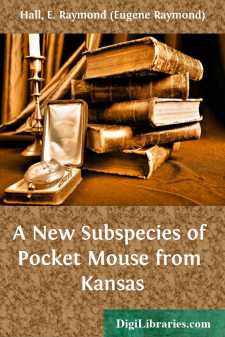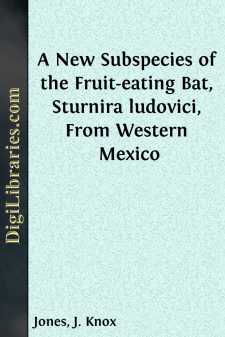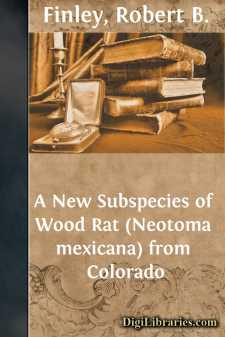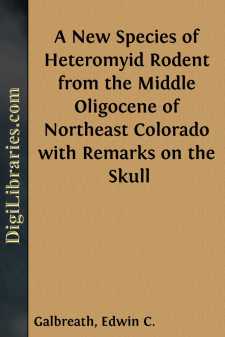Fiction
- Action & Adventure 180
- Biographical 15
- Christian 59
- Classics
- Coming of Age 5
- Contemporary Women 3
- Erotica 8
- Espionage/Intrigue 12
- Fairy Tales, Folklore & Mythology 236
- Family Life 169
- Fantasy 117
- Gay 1
- General 596
- Ghost 32
- Historical 808
- Horror 43
- Humorous 160
- Jewish 25
- Legal 4
- Medical 22
- Mystery & Detective 315
- Political 49
- Psychological 41
- Religious 64
- Romance 159
- Sagas 11
- Science Fiction 730
- Sea Stories 113
- Short Stories (single author) 537
- Sports 10
- Suspense 1
- Technological 8
- Thrillers 2
- Urban Life 31
- Visionary & Metaphysical 1
- War & Military 173
- Westerns 199
Classics Books
Sort by:
Top of head and nape dusty brown; tip of rostral and lateral edges of superciliaries dark cream-color; upper labials and sides of head anterior to eyes cream-color, mottled with blue; lower labials and postocular region pale blue; mental, postmental, and sublabials cream-color. Upper surfaces of forelimbs dull bluish gray, spotted with pale greenish yellow; dorsal surfaces of proximal one-fourth of...
more...
by:
Terry A. Vaughan
The first specimens of Myotis velifer from California were taken in 1909 by C. L. Camp at Needles, San Bernardino County (Grinnell, Univ. California Publ. Zool., 12:266, March 20, 1914), and subsequently this bat was recorded from farther south in the lower Colorado River Valley at the Riverside Mountains, Riverside County (Stager, Jour. Mamm., 20:226, May 14, 1939). West of the Rocky Mountains the...
more...
HISTORICAL SIGNIFICANCE [ILLUSTRATION] The Louisiana Purchase Exposition was held in the city of St. Louis in 1904, in commemoration of the acquisition in 1803 of the vast territory west of the Mississippi, then called Louisiana. The transfer is generally regarded as one of the most important events in our national history and stands on record as the greatest acquisition of territory ever made by...
more...
When preparing distribution maps for a revised list of the Mammals of Kansas it became apparent to me that pocket mice of the species Perognathus flavescens from south-central Kansas and adjoining parts of Oklahoma were without a subspecific name. The new subspecies is named and described below. Perognathus flavescens cockrumi new subspecies Holotype.—Female, subadult (P4 moderately worn), skin with...
more...
by:
John M. Legler
In September, 1958, the author and two colleagues collected a large series of Pseudemys in small ponds and in a river in the basin of Cuatro Ciénegas, Coahuila. The specimens prove to represent a previously unrecognized subspecies of Pseudemys scripta. The subspecies is named in honor of Edward Harrison Taylor who has contributed more than any other person to our present knowledge of the herpetofauna...
more...
by:
J. Knox Jones
The fruit-eating bats of the genus Sturnira are represented on the North American mainland by two species, S. lilium and S. ludovici. The former, in most areas the smaller of the two, is widely distributed in México and Central America and is common in many places. On the other hand, S. ludovici, described by Anthony (1924:8) from near Gualea, Ecuador, generally has been regarded as rare; insofar as...
more...
by:
Robert B. Finley
Field and museum studies of the wood rats of Colorado have revealed the existence of an unnamed subspecies of Neotoma mexicana in eastern Colorado south of the Arkansas River. The characters of the new subspecies are most distinctive in the northeastern part of its range near Two Buttes and Higbee. It differs in cranial characters from N. m. fallax and N. m. inopinata and averages slightly larger, but...
more...
by:
John M. Legler
Gopherus flavomarginatus new species Holotype.—U.S. National Museum 61253, adult; stuffed specimen with disassociated skull; 30 to 40 miles from Lerdo, Durango, Mexico; obtained by Dr. Elswood Chaffee, 1918. Paratypes.—USNM 61254, adult, stuffed specimen with skull in place, other data the same as those for holotype; USNM 60976, adult, stuffed specimen with disassociated skull, Lerdo, Durango, Dr....
more...
Heretofore our knowledge of the osteology of Heliscomys Cope has been extremely limited; this genus previously was known by its teeth, fragmental maxillaries, incomplete palatine bone and mandible, and part of one forelimb. In the summer of 1946 the writer, as a member of the University of Kansas Museum of Natural History field party, discovered the anterior part of a skull of Heliscomys in the middle...
more...
by:
Peter A. Porter
The printed story of Niagara dates back only three centuries; and during the first three decades of even that period the references to this wonderful handiwork of Nature—which was located in a then unexplored region of a New World, a Continent then inhabited only by warring tribes of superstitious Savages—are few and far between. Three facts relating to this locality—and three only—seem to be...
more...


